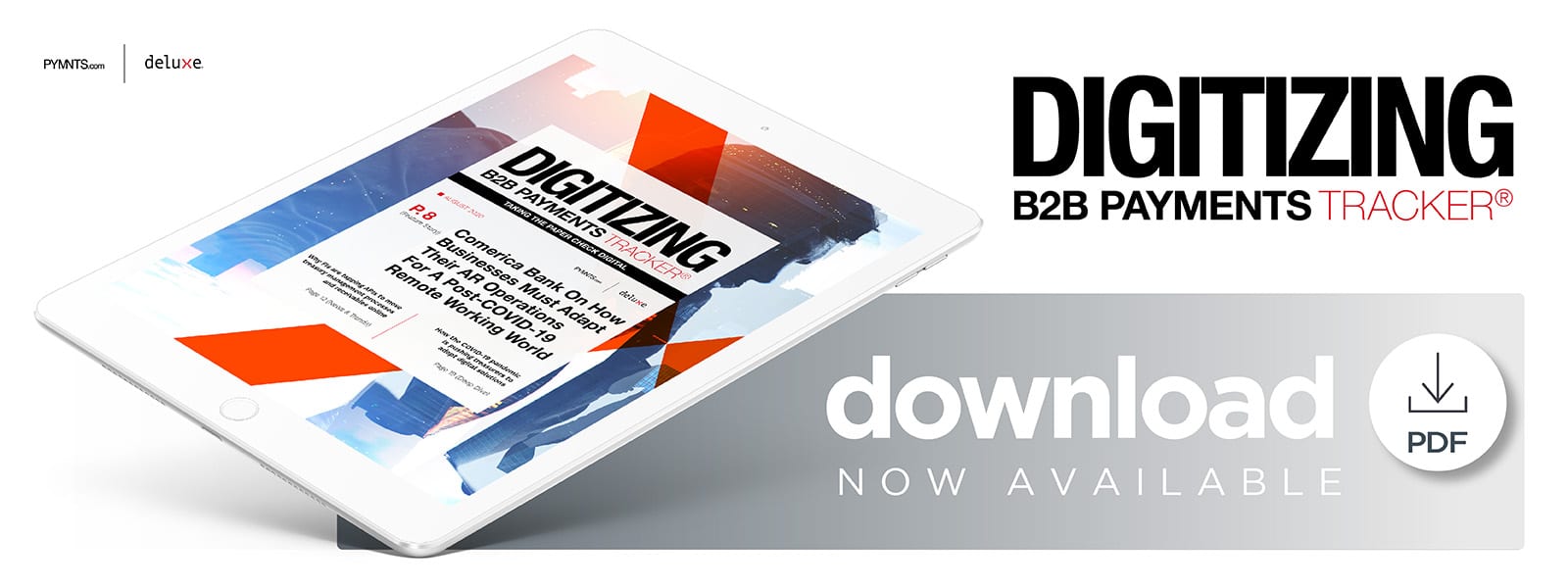Deep Dive: How The COVID-19 Pandemic Is Pushing Treasurers To Adopt Digital Solutions

New technologies aimed at improving payments’ flexibility, speed and transparency have been trickling into treasury departments for some time, bolstered by the growing number of businesses and consumers heading online for such services. One 2019 survey found that 54 percent of treasury professionals reported using application programming interfaces (APIs), for example, and 79 percent also stated that they intended to incorporate innovative technologies into their systems in the near future.
Clients themselves have been happily utilizing digital receivables for many years, but the back-end processes tasked with supporting them remain outdated and frustratingly slow. The same 2019 report also revealed that 63 percent of those surveyed claimed their TMS operations are either completely unconnected or only somewhat connected to their enterprise resource planning (ERP) tools. Many continue to rely on systems that are ill-suited to managing the increasing number of transactions and other requests they are receiving through online and mobile channels. They are also comfortable with and reliant upon check-based payments, though they are interested in digitizing the solutions that support them. Motivation to upgrade TMS and the technologies attached to these systems has grown during the pandemic, however, with 95 percent of treasury professionals in one recent study noting they support further digitization of their operations and in the overall industry.
The following Deep Dive will examine why the treasury space’s support for digital tools has not directly translated into innovation. It will also analyze how changing customer behaviors and events such as the pandemic have emphasized the need to innovate these tools, and why legacy payment methods such as checks may remain industry staples.
What’s Holding Treasurers Back
A sizable share of treasury departments does not have dedicated technology budgets, which could be one of the main factors preventing them from enhancing their TMS operations. A recent report found that 31 percent of treasury professionals admitted the lack of such budgets was hindering their innovation efforts. Other departments are more focused on managing cash flows and financial exchange (FX) risks than working to quickly develop technology-forward services. Risk management remains a top priority, with 71 percent of treasurers in a 2019 survey stating that they review their risk policies both yearly and when noteworthy events affect the market.
Treasurers’ tunnel vision regarding risk management, liquidity issues and ongoing payments means many are attempting to tackle their concerns using lagging processes that can be costly as well as time-consuming. Ninety-one percent of professionals claimed to use some form of cash flow forecasting, but 72 percent stated that they manually collected and categorized data to do so. Utilizing manual methods creates a vicious circle, as treasurers risk forecasting with outdated or inaccurate information that can compound their risk management and cash flow concerns. Treasury professionals have gained appreciation over the past few years for emerging technologies that can cut through this cycle, reduce costs and grow working capital, even if implementation has been comparatively slow.
The pandemic’s impact on the space has rattled the status quo, however, as a multitude of businesses is seeking quick and seamless online support from their treasury partners. Firms are thus in need of solutions that can add the flexibility and speed their clients require.
Checks’ Place Amid The Technology Boom
The ongoing health crisis is exacerbating concerns treasurers have faced for a while. Treasury professionals are racing to shield their clients and themselves from the pandemic’s negative financial effects, with 64 percent citing liquidity worries as their main concern. Risk was the next most common issue, with 25 percent reporting worries over FX volatility. Solving these concerns is a priority for the industry, which could explain why the overwhelming majority of treasurers now champion digitization at their firms.
Firms are on the hunt for technologies that can help them meet clients’ new digital standards, but they still value the reliability of legacy payment methods like checks. Leveraging artificial intelligence (AI), API-connected platforms and other automated tools can accelerate the processes attached to such payments without forcing businesses to upgrade their infrastructures.
Each of these technologies offers unique benefits to support digital innovations. Automated tools can be integrated into treasury departments’ TMS operations to tackle cash flow forecasting and determine risks, for example, while APIs allow firms to swiftly send and receive funds, client requests and sensitive information from partner institutions. Departments are also interested in implementing additional payment options alongside checks, with 34 percent of treasurers claiming their firms would support instant payments within the next year. Twenty-six percent said they would integrate virtual card acceptance.
Supporting various payment options requires significant shifts in departments’ TMS operations, however, meaning firms will need to examine whether their core infrastructures can handle newer methods and enable them to coexist alongside legacy solutions. Companies whose treasury departments are quick to innovate will be most ready to satisfy existing customers and draw new ones.

